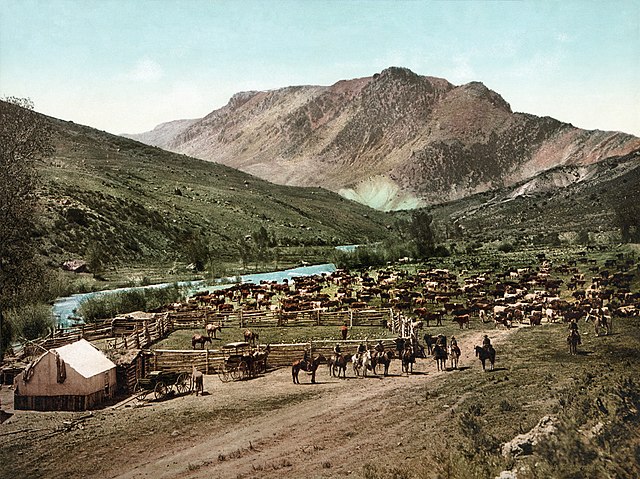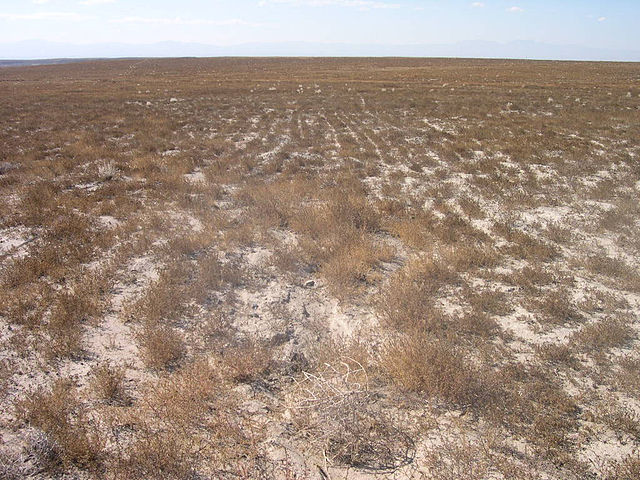In the Western United States and Canada, open range is rangeland where cattle roam freely regardless of land ownership. Where there are "open range" laws, those wanting to keep animals off their property must erect a fence to keep animals out; this applies to public roads as well. Land in open range that is designated as part of a "herd district" reverses liabilities, requiring an animal's owner to fence it in or otherwise keep it on the person's own property. Most eastern states and jurisdictions in Canada require owners to fence in or herd their livestock.
Red Desert rangeland in Wyoming
Open Range sign along southbound U.S. Route 93 in Lincoln County, Nevada.
A cattle roundup in Colorado, c.1898.
An open range sign along the Interstate 10 Frontage Road in southern Arizona.
Rangelands are grasslands, shrublands, woodlands, wetlands, and deserts that are grazed by domestic livestock or wild animals. Types of rangelands include tallgrass and shortgrass prairies, desert grasslands and shrublands, woodlands, savannas, chaparrals, steppes, and tundras. Rangelands do not include forests lacking grazable understory vegetation, barren desert, farmland, or land covered by solid rock, concrete and/or glaciers.
Red Desert rangeland in Wyoming. Water from melted snow pack can be seen on the ground. Such melting is the main source of surface water in Wyoming.
Weeds are all that remains in Idaho after overgrazing, wildfires, and subsequent invasion by non-native species. Russian thistle (Kali tragus) is the only plant species seen in this picture.
Konza Prairie
Buffalo grazing on rangeland in Crook County, Wyoming.







